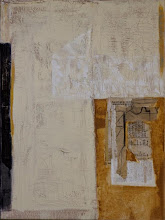This summer I went on a grant from Aspen Writers Foundation (now affiliated with the Aspen Institute) to Aspen. The idea was to work out a structure for this new venture of mine, so that when I am ready to write it, that work will be already started. I studied with Bill Loizeaux and a group of other wonderful aspiring memoirists (more on that another time) in the pristine environs of Aspen Meadows.
July 8, 2010
I reach toward a bowl of peaches that are going soft and wrinkly in the refrigerator. Because I’ve been thinking about her a lot lately, it occurs to me: the peach in my hand, has the exact texture of Nanna’s skin – soft, fuzzy, but still dense inside. I reach for a knife and begin to scoop the brown spots out of one. The knife is not the sharpest in the drawer, I find. But rather than find another, I continue, using pressure, rather than precision. There is still life inside this peach and I’m determined to save it. I cut it into half and carve out the brown. Then pry out the seed wedged within. More soft spots.
As I age too, the hands I admired in Nanna, are now my hands. Granted, the bones in my hand are finer. My hands, smaller, the wrists like a child’s I think sometimes. I get that from my paternal grandmother, perhaps. But the structure is similar. I have fewer veins that pump out of the skin. My mother has the veins too. Like Nanna, hers were blue. The skin, like oiled parchment. Mine are green under a tawnier skin. I wanted those veins, I was envious of those veins. For me, they were a hallmark mark of their combined beauty. It was lineage I was looking for. An intricate highway into those restless tips that keep their tune to that music in Nanna’s head. But it’s the bones that I see in my own hands. The structure. The bones that, in her old age, began to spread, pushed outwards from the joints that had become thicker, knottier, more stubborn.
I carve out the soft spots from the peach in my hand. They hide like a secret around the seed, still holding it to themselves. When I cut it all out, I have thin slices. I taste one. On account of being refrigerated, the peach is still a little sour. The sugars have been arrested in their development. And the meat, I find now, is too soft for the trouble I took. I eat it anyway. And then it hits me. For years I watched my grandmother do this. And still, I had forgotten – until now.
She would take bananas from a covered plate. Instead of picking the best of the bunch, she always took the one that was closest to being thrown away. Although I must say, there was little she ever threw away. Disturbed, tiny fruit flies would sigh outwards. She would wave them away. As if it made a difference. She would peal the soft brown skin as it limply fell away. Taking a breakfast knife from a small tray on the table, she too used more pressure than precision, like I did today, to carve out little concavities around the creamy fruit until it was notched like a totem pole, then cut it into chunks.
Just for the record. There are those who like their bananas on the raw side; without blemish, and very firm. With only a hint of the flavor to come. And then there are those that will not eat it until it has a generous sprinkling of brown spots and the sweetness is unbearable. By now you’ve guessed. My grandmother came from the latter category. I, the first.
I slip the pieces of the peach into my mouth. There is barely any substance. They go quickly. Peaches are the same, I like them firm and juicy, running down the sides of my inherited knuckles. I really should had taken one of the good ones and thrown away the one I ate. But I am too much my grandmother’s grand daughter. I finish the last slice and trash the brown remains. There are two nice ripe ones for anyone else who might come by.












+cotton,+paper+charcoal+and+acrylic+mediums+on+canvas+2006.jpg)
+cotton+papaer+charcoal+and+acrylic+mediums+on+canvas+2006-1.jpg)